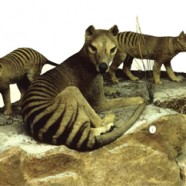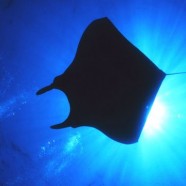Thousands of animals from endangered species gone up in smoke
At least 15.000 exotic animals died in a fire of the Savannah Reptiles Planet warehouse in Saint-Sulpice-la-Pointe in the southwestern part of France. The animals were intended for the exotic pet market.
Sand boas, boa constrictors, royal pythons, panther chameleons, green iguanas, Hermann’s tortoises, Asian leaf turtles, leopard tortoises, African spurred tortoises, poison dart frogs are listed under CITES Appendix II (the Convention on International Trade in Endangered Species of Wild Fauna and Flora). Appendix II regulates international trade.
A Taser for Soles n° 2
The European Fisheries Commission in Brussels recently authorized the extension of electric pulse beam trawling in the North Sea. It justifies this decision citing the ability of Member States to conduct pilot projects. 87 Dutch trawlers can now practice electric fishing, compared to 42 in 2012.
This new madness contradicts the 1998 fishing regulation, which, based in particular on the need to protect juveniles, prohibits the use of explosives, poison, soporific substances, or electric currents.
Sole is the main target species for this “new” fishing technique, which has actually been in practice for more than a century. The European pilot project has been running since 2006, but no progress reports have been submitted. Fish that have been caught in the trawl nets show burns, bruises, and skeletal deformations as a result of electrocution.
“On the Trail” n°3
“On the Trail” n°3
(pdf 80 p. 4.5 Mo)
Robin des Bois is pleased to present to you the third edition of “On the Trail”, a quarterly information and analyses bulletin on animal poaching and smuggling with a special item on the scheduled French illegal ivory crushing tomorrow.
“On the Trail” n°2
Take a trip of beauty and cruelty in the following 80 pages (pdf. 4Mo), swing through the trees with the supreme pleated gibbon, still at liberty in the wild despite being endangered, get to the bottom of cyanide and of poisoned pineapples, survive the etorphine laced arrows, scheme with furniture dealers looking for ivory, discover the cunning tiger trappers, hunt down blackbucks with Bollywood stars, cruise towards China with 2,000 saiga antelope horns worth 22 million dollars, look into the eyes of a baby chimpanzee in a pathetic plastic bag at a Cameroon market, entrench yourselves in the fate of thousands of birds and animals unwilling migrants forcefully removed from their habitats, float down a river with a mutilated elephant carcass and find out about France’s stance on the future of illegal ivory stockpiles, eat Ganges river dolphin meat, pay homage to rangers and forest guards murdered in the wild by poachers …
Robin des Bois will Pursue them via “On the Trail”
Today, Robin des Bois, the Paris based NGO, released the 1st edition of “On the Trail”, a quarterly information and analysis bulletin on poaching and smuggling of endangered animals.
206 events of poaching, seizures, arrests and convictions which occurred in Africa, Australia, America, Europe and Asia are listed. This panoramic vision of cruelty and criminal acts on wildlife, between April 1 and June 30, 2013 makes one shiver and deliberate.
In three months the equivalent of 707 elephants, in tusks, were seized. Poaching of Mali elephants is increasing. Robin des Bois recently wrote to the Secretary-General of the United Nations, requesting that UN peacekeeping troops be given strict instructions to protect the subsisting elephant population.
Would you please revive the species?
CITES – Bangkok
Press Release # 8
Animal species are extinguished. The plenary of CITES (Convention on International Trade in Endangered Species of Wild Fauna and Flora) in Bangkok was the opportunity to bury, without ceremony, the Thylacinus cynocephalus and some other species wiped off the planet in the past century. Their family trees date back several million years. Extinctions are accelerating.
These biological disasters are not caused by any disruptions in climate, geological mutations or functional inadequacies. Mankind is the conductor of these disasters, wreaking havoc through risky manipulations or introductions and through radical exploitation of its surroundings.
The Capitalism of Extinction
Convention on International Trade in Endangered Species of Wild Fauna and Flora
CITES 2013 – Bangkok, 6 pm (local time)
Press Release No. 7
Making money from the extinction of species could become an industry of the future. It has certainly been developed by CITES – Convention on International Trade in Endangered Species of Wild Fauna and Flora.
Looking at the re-opening of international ivory trade, CITES has published à call of tender for an “independent study”. It has been attributed to specialized consultants from southern Africa. Among the 5 authors, Rowan Martin, director of research on wild fauna in Zimbawe, and Debbie A. Peake, one of the best taxidermists of Botswana, are also present. The main recommendation of the study co-financed by the European Union is to create CISO (Central Ivory Selling Organization), a single office for ivory sales. CISO would be modeled after the Diamond Trading Company (DTC), this De Beers Company has lasted over 100 years. One director, named by the main producing states, regulates trade to recognized and accredited governments or private processing companies. Short routes reduce the risks of mixing in illegal ivory. Inter-African sales would be prohibited. The report proposes that it would be possible to collect 8 tons of ivory each year for every 10,000 elephants killed by slaughter, hunting, or natural causes. The authors highlight that this management of ivory would be possible only in the absence of civil disorder and arms conflicts in producing countries. Within the report, ivory is an ore distanced from all biological, ethical and cultural considerations.
CITES : Vote blank !
Convention on International Trade in Endangered Species of Wild Fauna and Flora
CITES 2013 – Bangkok, 7.00 pm (local time)
Press release # 6
The United States, Russia, and the European Union take plenary session this week for the 16th CITES assembly. “A joint proposition for polar bears!” such is Robin des Bois’ message for Bangkok.
This new, last resort proposal could ban international polar bear trade concerning eight declining subpopulations. It would be less restrictive than the Appendix-I ban on international trade for all polar bears, and would therefore be more likely to collect more votes than the initial proposal by the United States. The decline of some subpopulations is recognized by all, including Canada. In 1991, Canada regarded the fate of polar bears as something which raised serious concerns. Polar bears in the western part of the Hudson Bay are especially targeted.















